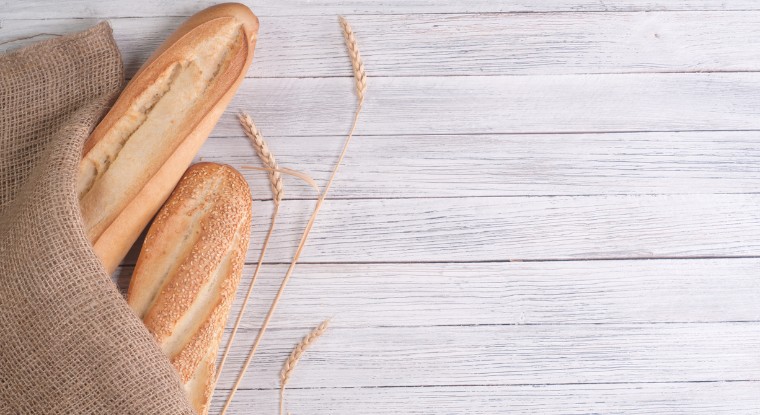There’s nothing quite like a homemade loaf of bread. The fresh-baked bread wafting through the house will surely bring a smile to anyone’s face. If you’re looking for a unique and thoughtful gift, why not bake some bread and wrap it up nicely? Here’s how to do it.
Start by wrapping the bread in a clean, dry tea towel or cheesecloth. This will help absorb moisture from the bread and keep it from getting mouldy. Then, place the wrapped bread in a large resealable plastic bag or an airtight container. Add a few slices of apples or other fruit to the bag or container to prevent the bread from drying.
How to wrap Sourdough Bread
How to Wrap Bread in Parchment Paper
If you’ve ever tried to keep a loaf of bread fresh for more than a few days, you know it can be challenging. But there is a simple solution: parchment paper. Parchment paper is a type of baking paper made from cellulose and coated with silicone or another nonstick material. It is heat-resistant and moisture-resistant, making it ideal for wrapping food.
To wrap the bread in parchment paper, start by tearing off a large sheet to wrap around the loaf. Then, place the bread in the center of the parchment paper and bring the sides up, so they meet in the middle. Next, fold the top and bottom edges over to create a seal. Finally, twist the ends of the parchment paper to secure it shut. Your bread will now be well-protected from drying out or getting stale. And when you’re ready to eat it, unwrap it and enjoy!
How Do You Wrap Homemade Bread?
Assuming you mean how to wrap store-bought bread: You can use plastic wrap, aluminium foil, or a reusable silicone bag to store your loaf of bread. First, make sure the bread is completely cooled before wrapping it. This will help prevent the bread from sweating and becoming soggy. If you’re using plastic wrap or aluminium foil, tightly seal the edges so that no air can get in and dry out the bread. You can also place the wrapped loaf inside a paper bag to help keep it fresh for longer. If you’re using a reusable silicone bag, close the bag tightly after ensuring the bread is completely cooled. Store your wrapped loaf of bread at room temperature; freezing it will cause it to become stale more quickly.
How Do You Wrap Baked Goods As a Gift?
One of the best ways to show someone you care is by giving them a homemade gift. Baked goods are always welcome, but they can be tricky to wrap up nicely. Here are a few tips on how to wrap baked goods as a gift:
1. Choose the right size box or container. You don’t want your goodies to be cramped up in a too-small box, but you also don’t want them bouncing around in a too-large one. Find something just big enough to fit everything snugly.
2. Line the bottom of the box with tissue paper or crumpled-up parchment paper. This will help keep your goodies from shifting around and getting damaged during transit.
3. Arrange your baked goods in an attractive way inside the box. Take care not to overcrowd the space, and leave some room for cushioning material like bubble wrap or foam peanuts.
4. Fill empty spaces with more tissue paper or crumpled parchment paper so that nothing moves around during shipping or handling.
5., Close up the box and seal it with tape, so it doesn’t come open in transit.
How Do You Store Bread for Gifting?
When you give someone a loaf of bread as a gift, it’s important to ensure that it stays fresh and delicious. Here are some tips on how to store bread for gifting:
1. If the bread is already sliced, wrap it tightly in plastic or aluminium foil. This will help keep the slices from drying out.
2. If the bread is unsliced, place it in a clean, dry paper bag before wrapping it in plastic or foil.
3. Store the wrapped bread at room temperature; do not refrigerate or freeze it.
4. For best results, use the bread within two days of gift-giving.
How Do You Wrap Bread for Delivery?
Assuming you would like tips on how to wrap bread for delivery: Bread is a staple in many homes and one of the most popular items sold in bakeries. Because it is such a common item, customers expect their bread to be fresh and delicious when they purchase it. This means that when you deliver bread, it is important to prepare it to arrive at its destination in the same condition as when it left your bakery. Here are a few tips on how to wrap bread for delivery:
1. Choose the right type of packaging. When packaging your bread, select something that will keep the bread fresh and protected from damage. Bread bags made from paper or cardboard are not ideal because they can tear easily and offer little protection from crushing or other damage. Instead, choose plastic bags that seal tightly or boxes with thick walls.
2. Place the bread in the packaging properly. Once you have selected your packaging, place the bread inside, not crushing or damaging it. If you use plastic bags, fill them only halfway so that there is room for the air to circulate and prevent the bread from becoming stale. It is also important to ensure the bag is sealed tightly before placing it in the box or container for delivery.
3 . Deliver the bread as soon as possible. Freshness is key when delivering bread so try to get the product to its destination as soon after baking as possible. This will ensure that the customer receives a delicious, fresh product.
Ending
Homemade bread is a great option if you’re looking for a thoughtful and unique gift. It’s personal and shows that you care, plus it’s delicious! But how do you wrap it, so it looks nice and stays fresh? Here are some tips:
– Use pretty paper or cloth. You can find speciality bread bags online or at baking stores.
– Make sure the bread is completely cooled before wrapping. Otherwise, the moisture will make the paper or cloth sticky.
– If you’re using paper, try to avoid using tape on the outside of the package. Tape can be tricky to remove and might tear the paper. Instead, use ribbon or string to tie up the package.
– Add a label with the type of bread and any special instructions, like “keep refrigerated.” This will help your recipient know what they’re getting and how to enjoy it best.






